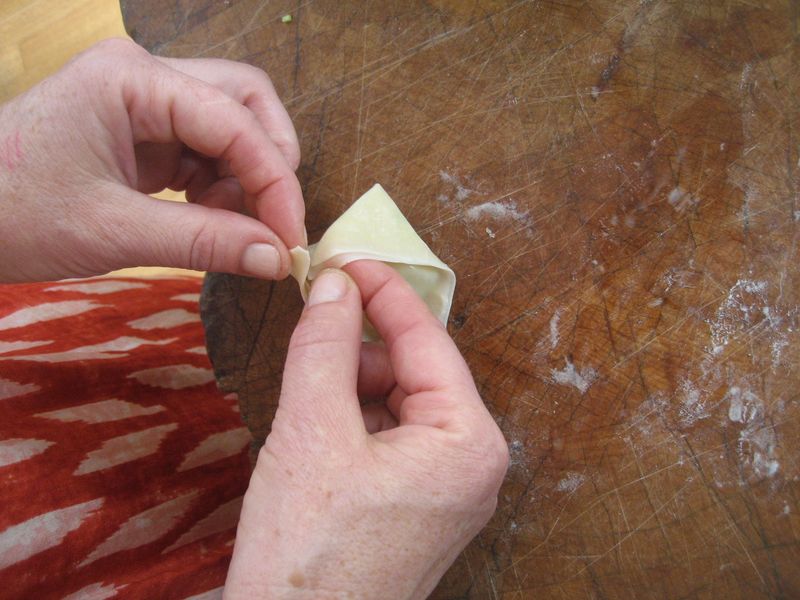By Humaira
One cannot claim to be an Afghan cook without a pressure cooker amongst your kitchenware. Jeja (my mom) is a big fan of hers. It’s understandable since so many Afghan recipes require slow cooking to bring out the best flavors. The pressure cooker is a great way to speed up the process.
I have to admit a deep-seated fear of pressure cookers that goes back to my childhood during which I would overhear Jeja and her sisters sharing stories of pressure cookers exploding when people tried to open them too soon. This was a regular topic of conversation amongst the cooks in my family. In Kabul, our kitchen would be cleared of all children and pets when the pressure cooker was in use.
Pressure cookers have come a long way since then, but Jeja still handles hers with caution. I overcame my pressure cooker phobia by investing in a good one six years ago. I confess that it sat in my pantry collecting dust for the first two years, but once I read the instructions and learned how to use it, I became a big fan as well.
Shorwa, which means “soup” in Dari, is one of my favorite Afghan dishes and is the perfect sort of thing to prepare in a pressure cooker. When I lived in Kabul, we used to eat shorwa on laundry day, a day when nothing else got done except for loads of laundry washed by hand in large tubs of water in our yard. Shorwa was meant to be a simple dish served at an uneventful meal and never to guests.
The people of Ghazni, a province located 70 kilometers southwest of Kabul where my dad is from, are known for making the best shorwa. It’s a rich and hearty soup made with meat, potatoes and in Jeja’s recipe, legumes. In Ghazni they generally serve the shorwa in a large communal bowl. Everyone rips their nan (Afghan bread) into small pieces, throws it into the shorwa and enjoys the soup using their hand. I have only witnessed this once, when I was a little girl visiting Ghazni. My relatives knew I was from Kabul and not used to eating shorwa this way. I was given my own bowl and a tattered metal utensil vaguely resembling a spoon.
Whether you choose to serve shorwa communally or in individual bowls, we hope you will give this recipe a try. I served it to my family for a simple Saturday meal using fresh ingredients and probably better grade meat than one would find in a shorwa in Afghanistan. It was a hit with my family, big and small.
Afghan Beef and Bean Soup
Shorwa e Gosht
One large red onion, roughly chopped
4 cloves garlic, minced
2 tbsp. olive oil
2 lbs beef stew or steak tips, cut into 1-inch pieces
3 medium tomatoes, roughly chopped
1 tbsp. tomato paste
1 tbsp. ground coriander
½ tbsp. ground turmeric
1 tbsp. Kosher salt
½ tsp. black pepper
8 cups water
1 medium russet potato, cut into ½-inch cubes
1 15 oz. can red kidney beans, rinsed
1 15 oz can garbanzo beans, rinsed
1 cup roughly chopped fresh cilantro
Add oil to a large pressure cooker and set over medium-high heat. Add the onion, brown for 5 minutes until soft, add the garlic and the meat. Mix well and cook for about 10 minutes until the meat is cooked through and a thick sauce forms. Add the tomatoes, tomato paste, coriander, turmeric, salt, pepper and the water, mix well. Set the lid on the pressure cooker and lock in place. All pressures cookers are different so make sure you read the directions for your pressure cooker so you know how to use it.
Over high heat, bring the soup to high pressure (where you hear the sound of pressure releasing), this takes around 10-15 minutes depending on your pressure cooker size. Lower the heat to medium/high while maintaining the high pressure (fizzling sound continues) for 10 minutes. Turn off the soup and set it aside for natural pressure release. This will let the pressure come down on its own while cooking the meat and concentrating the flavors.
Once the pressure has released, open the lid. Add the potatoes, garbanzo beans, kidney beans, and cilantro to the soup. Bring the soup to a gentle boil with these ingredients and cook until the meat and potatoes are tender (10 to 20 minutes).Serve hot with nan, pita or flour tortillas.
Serves 6-8
Loading up on energy right before a soccer game
Except where otherwise noted, all content on this blog is licensed under the Creative Commons Attribution-NonCommercial-NoDerivs 3.0 Unported license.












